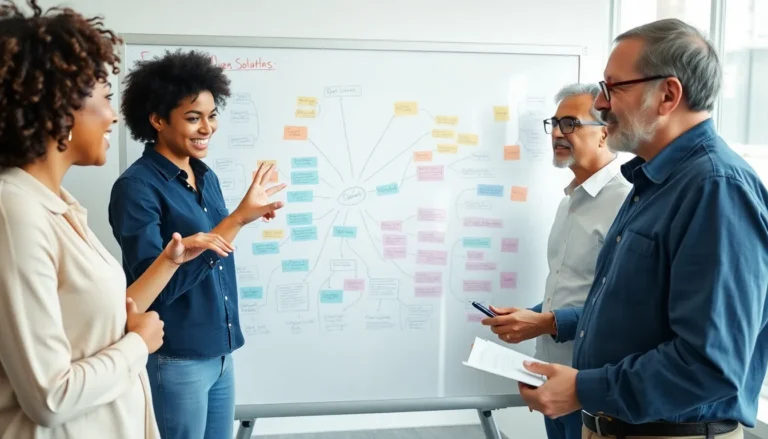In a world where distractions lurk around every corner—like a cat waiting to pounce on a laser pointer—staying productive can feel like an Olympic sport. However, mastering the art of productivity doesn’t require a gold medal; it just takes the right strategies and a sprinkle of humor. Imagine breezing through your to-do list while sipping your favorite coffee, all without the chaos of last-minute panic. Sounds dreamy, right?
Table of Contents
ToggleUnderstanding Productivity
Productivity involves effectively managing time and tasks to achieve goals. This concept extends beyond mere efficiency; it centers on getting valuable work done consistently.
What Is Productivity?
Productivity measures the output relative to input within a specific timeframe. It applies across various fields, from individual work to team collaborations. Achieving high productivity often means prioritizing tasks, Streamlining processes, and minimizing distractions. Many consider time management a critical factor. Individuals can enhance productivity by setting clear objectives, which guide daily efforts.
Importance of Productivity in Daily Life
Productivity plays a crucial role in daily activities. Increased productivity leads to a more balanced lifestyle, as individuals often achieve both personal and professional goals. Enhanced productivity results in less stress and greater satisfaction. Individuals experience a sense of accomplishment when they complete significant tasks efficiently. Furthermore, improved productivity typically frees up extra time, allowing for personal pursuits, hobbies, or relaxation. This balance proves essential in maintaining overall well-being and motivation.
Elements of a Productivity Guide

A comprehensive productivity guide includes various elements that contribute to effective time management and task achievement. By implementing these elements, individuals can improve their focus and output.
Goal Setting Techniques
Setting clear, measurable goals provides direction and motivation. Specific aims clarify what needs to be accomplished. Goals should be SMART: Specific, Measurable, Achievable, Relevant, and Time-bound. Individuals can break larger objectives into smaller, manageable tasks for better tracking. Regularly reviewing goals encourages reflection and adjustment. Motivation often increases with visible progress, creating a sense of achievement.
Time Management Strategies
Effective time management helps individuals allocate hours wisely. Techniques like the Pomodoro Technique enhance concentration by breaking work into intervals, typically 25 minutes, followed by short breaks. Utilizing tools such as calendars and task lists ensures that deadlines are met consistently. Delegating tasks allows individuals to focus on high-value activities, optimizing overall productivity. Planning each day the night before prepares individuals for success and reduces morning stress.
Prioritization Methods
Establishing clear priorities is vital for staying productive. The Eisenhower Matrix helps individuals categorize tasks based on urgency and importance, enabling efficient decision-making. Often, individuals can distinguish between tasks that require immediate attention and those that can wait. A daily top-three task list ensures focus on high-stakes activities. Leveraging tools like priority matrices aids in visualizing and organizing workloads, making it easier to navigate competing demands.
Tools and Resources for Enhanced Productivity
Finding the right tools and resources enhances productivity. These options range from digital solutions to physical items, each designed to streamline tasks and improve focus.
Digital Tools for Productivity
Many digital tools cater to productivity needs. Task management software like Trello allows teams to organize projects efficiently. Collaboration platforms such as Slack facilitate communication, reducing email clutter. Calendar applications help schedule tasks, ensuring that deadlines are met. Additionally, focus apps like Forest promote concentration by minimizing distractions. Users report better time management and increased output when they effectively utilize these tools.
Productivity Apps Review
App reviews highlight several standout productivity applications. Todoist, a task management app, offers features for tracking progress and setting deadlines. Evernote functions as a digital notebook, perfect for capturing ideas and organizing notes. RescueTime analyzes daily habits, providing insights into time usage. Moreover, Notion serves as an all-in-one workspace for various projects, integrating tasks and notes. Each app offers unique features that support goal achievement and efficient workflows.
Physical Tools that Boost Efficiency
Physical tools complement digital resources to enhance productivity. Planners and journals provide a tactile way to outline tasks and reflect on progress. Ergonomic chairs promote comfort, reducing fatigue during extended working hours. High-quality stationary encourages creative thinking and effective note-taking. Time management tools like timers can help maintain focus during work intervals. Users find that combining these physical tools with digital resources creates a well-rounded approach to productivity.
Creating Your Personalized Productivity Plan
Creating a personalized productivity plan involves assessing where one stands, identifying opportunities for growth, and systematically implementing changes. A structured approach boosts effectiveness and encourages sustainable progress.
Assessing Your Current Productivity Levels
Begin by tracking daily tasks and time spent on them. This reveals patterns and highlights productive periods versus distractions. Employees might use tools like RescueTime to measure outputs and refine their focus. Regularly reviewing this data provides valuable insights, allowing individuals to understand strengths and weaknesses in their workflow. Establish a baseline to identify how time allocation aligns with goals and objectives.
Identifying Areas for Improvement
Next, pinpoint specific areas needing enhancement. Consider categorizing tasks into urgent, important, or both using the Eisenhower Matrix. An individual may discover that less urgent tasks consume significant time, detracting from critical activities. Surveying these categories directs attention to high-impact items that can elevate overall productivity levels. Prioritization helps focus efforts where they’ll yield the best results. Identify consistent distractions to minimize or eliminate them for improved concentration.
Implementing Your Plan
Finally, execute the personalized productivity plan with concrete steps. Use SMART goals to clarify intentions and set measurable benchmarks for success. Integrate strategies like the Pomodoro Technique to enhance focus during work sessions. Allocate time for regular reviews to adjust the plan based on progress. Commitment to the process promotes steady improvement and sustained productivity. Regularly adjusting the approach ensures it remains effective and aligned with evolving objectives.
Mastering productivity is an ongoing journey that requires a blend of effective strategies and a positive mindset. By embracing techniques like SMART goal-setting and utilizing the right tools, individuals can navigate distractions and enhance their focus.
Creating a personalized productivity plan empowers individuals to identify their strengths and areas for improvement. Regularly assessing progress ensures alignment with goals and fosters continuous growth.
Ultimately, productivity isn’t just about getting more done; it’s about achieving meaningful results while enjoying the process. With the right approach, anyone can transform their productivity habits and lead a more balanced and fulfilling life.


